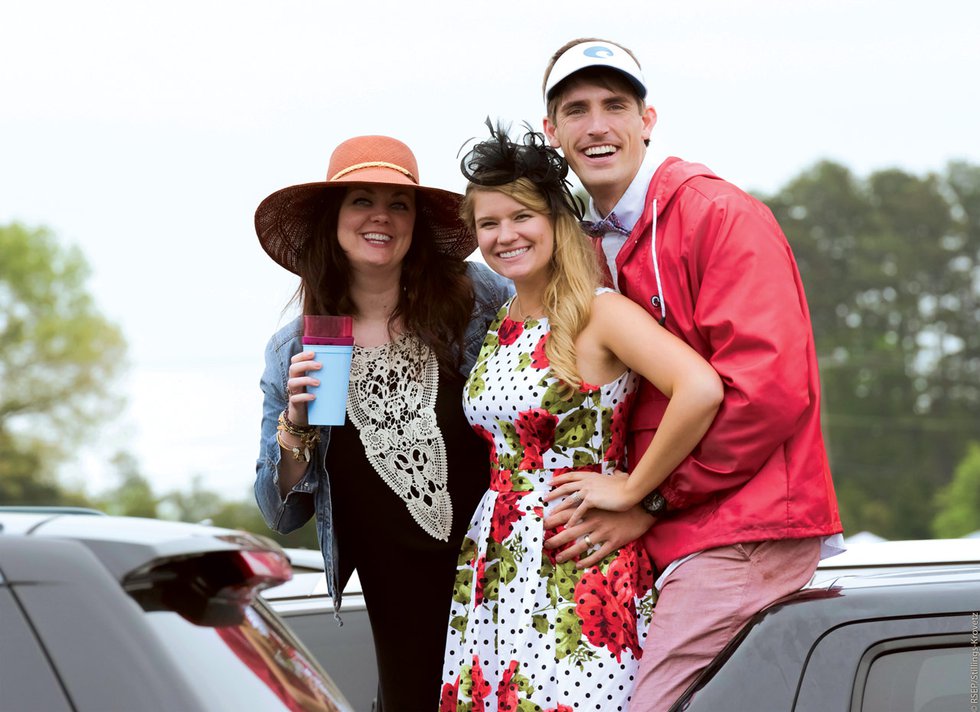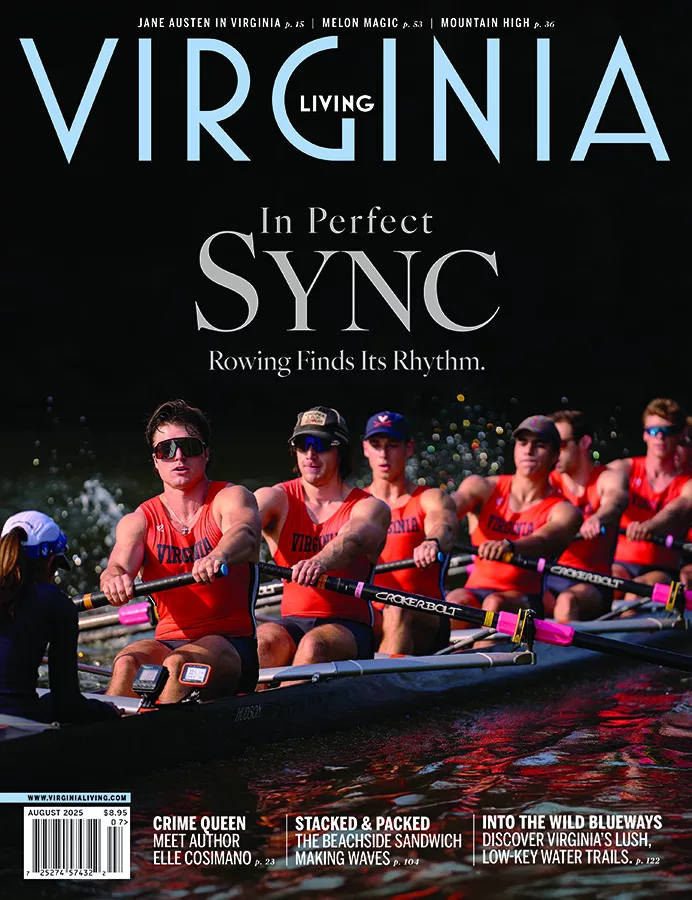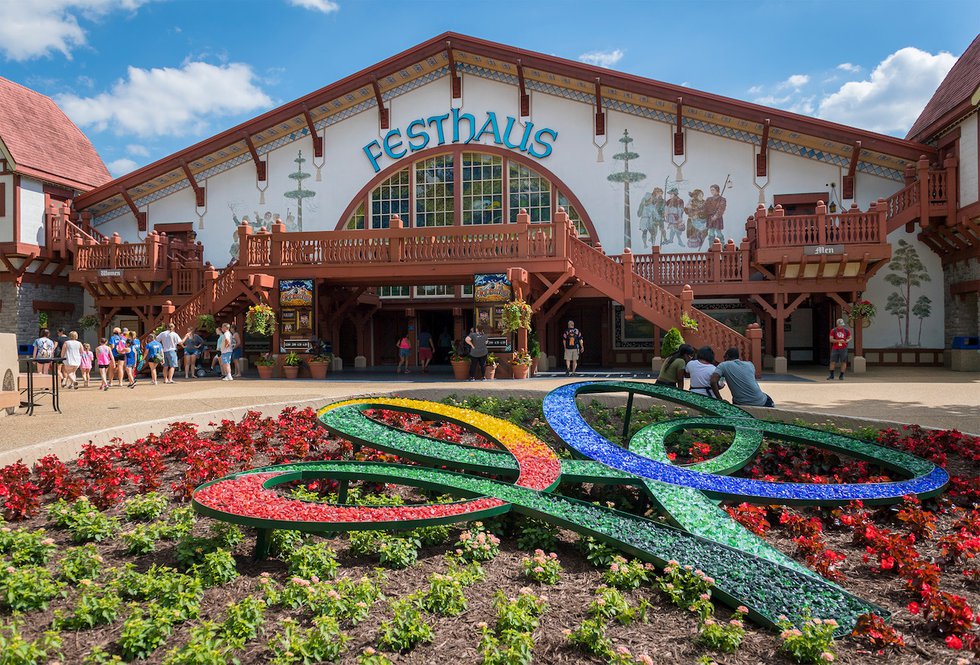Virginia’s love affair with the drama and glamour of steeplechase.

Robert Walsh guides Demonstrative, trained by Virginia’s Richard Valentine, to the win in the 2014 Grand National at the Far Hills Race Meeting in Far Hills, New Jersey.
Photo by Skip Dickstein

A rider clears a timber fence at Foxfield, 2016.
Photo by Rick Stillings

The spring 2016 Foxfield races.
Photo by Rick Stillings

The Daniel Van Clief Memorial Race.
Photo by Rick Stillings

Irv Nayor’s Saluda Sam leads the field through the water in the 2016 Virginia Gold Cup.
Photo by Tod Marks

UVA Students at the Spring Foxfield races.
Photo by Rick Stillings

UVA Students at the Spring Foxfield races.
Photo by Rick Stillings

The rail along Member’s Hill at the 2015 Virginia Gold Cup.
Photo by Tod Marks

Photo by Richard Clay

Top Virginia trainer Richard Valentine and Jacqueline Ohrstrom, owner of Demonstrative, at the 2011 Far Hill Races.
Photo by Tod Marks

Eclipse-award winning steeplechaser Slip Away in the 2010 Temple Gwathmey Hurdle Stakes at Glenwood Park, Middleburg.
Photo by Tod Marks

2016 Foxfield Fall Family Day.
Photo by Rick Stillings

Lemony Bay, owned by Bruton Street-US and ridden by Connor Hankin, hurdles a natural brush fence at the 2016 Virginia Gold Cup Races.
Photo by Tod Marks
It’s race day at the Virginia Gold Cup—the Kentucky Derby of Virginia jump racing—and 50,000 spectators flood the grounds at Great Meadow in The Plains. They are here on this first Saturday in May waiting to watch one horse emerge from the pack and thunder across the finish line to win the state’s most prestigious race, the Gold Cup Timber Stakes, and claim a piece of the day’s biggest purse, $100,000.
Winning here is no small feat. The picturesque racecourse is a long oval, mostly flat, with rolling grassy hills. But racing on grass is challenging. Too much rain, and the footing gets deep and muddy, slow. Too little rain, and the ground can be hard and slick.
Today, skies are clear.
The field is full at nine horses, and many prance and jig, nervous as they approach the start. Their ears are pricked forward, their heads held high and eyes wide: They know what’s coming. Staying light in the saddle, the jockeys in their colorful silks hold the reins tight, and some likely say a few silent prayers.
Soon, this elite grouping of steeplechase’s top horses will race for four miles at high speed over impossibly tall timber jumps as solid as tree trunks. Racing is dangerous business—it’s also an adrenaline ride like no other. In what other sport do you sit on top of a powerful animal with a mind of its own that can weigh more than 1,200 pounds and gallop at top speeds near 40 mph? The answer: none.
The cheers of the crowd lining the rails as far as the eye can see swell to a roar; the race is off.
Like a wave, the roar follows the galloping horses as the ground shakes and vibrates. The horses take the first jump and soar over, landing with little room to spare as their feet kick up turf in their wake. Then they pound off for the next jump, laying it all on the line for that moment.
From the chaos comes a moment of clarity. Steeplechase is passionate—a glorious sport with amazing animals doing what they were born to do.
Origins
The steeplechase traces its origins to 1752, in County Cork, Ireland, where a horseman named Cornelius O’Callaghan engaged Edmund Blake in a match race of 4 ½ miles from Buttevant Church to St. Mary’s Doneraile. The tower there was known as St. Leger Steeple—the most prominent landmark around—and so the men set off in a “chase to the steeple.”

Adding a competitive element to the already thrilling pursuit of galloping at top speed over rough country proved a winning combination. The trend took off and this form of cross-country match racing—“my horse against yours”—soon spread to England. Though the first reported race involving more than two horses occurred in England in 1792, the first race over an established course occurred there in 1810. The sport quickly grew in popularity, and the first Grand National, Europe’s most prestigious jump race whose towering fences and challenging distance have made it the ultimate test of horse and rider, was staged in 1839 at Aintree, a small town outside Liverpool.
Steeplechasing found its way to the U.S. through foxhunting, first taking hold in New York, Maryland, Virginia and eastern Pennsylvania, and eventually spreading to the Carolinas, Georgia, Massachusetts and other states.
For much of the 20th century, foxhunting clubs were the hub of social and sporting activities, and their informal steeplechase or “hunt” races were wildly popular. Horses were an integral part of life, and those who enjoyed “riding to hounds” naturally enjoyed other sporting pursuits with their horses, namely racing. So popular were the races that in 1895 the National Steeplechase Association (NSA) was formed to sanction, oversee and regulate all aspects of the sport.
The strong tradition of foxhunting endures today in Virginia through its 26 active hunt clubs. One of the oldest, Manakin-Sabot’s Deep Run Hunt Club, founded in 1887, originally held hunt races on Broad Street, and later at Ginter Park when the club was based in the city of Richmond. In 1900, the club was recognized by the NSA, merged (briefly) with the Country Club of Virginia and held nationally-sanctioned steeplechase races on a course that ran west from Cary Street up River Road. The Deep Run Hunt Races eventually became known as Richmond’s legendary Strawberry Hill Races. In 1947, the Strawberry Hill Races moved to the Atlantic Rural Exposition (today’s RIR) to a new course developed by William du Pont Jr.
Du Pont and his sister, Marion du Pont Scott, were very involved in many aspects of equestrian life in Virginia, including both flat and jump racing, breeding, horse shows and venue development.
Marion won many important races with Battleship—the son of great thoroughbred Man o’ War—including the American Grand National in 1934. She also won the British Grand National at Aintree in 1938 when her 40-to-1 long shot overtook the favorite in the last stride. Battleship became the first American-bred and -owned horse to win at Aintree.
Her brother developed many racing venues, including Fair Hill (home to the National Steeplechase Association headquarters and its race course in Maryland) and the Springdale Race Course in Camden, South Carolina (home of the Carolina Cup and the Colonial Cup races). Overall, du Pont developed 23 racecourses for both flat and steeplechase racing through the mid-part of the 20th century.
In 1901, William du Pont Sr. purchased Montpelier, President James Madison’s estate near Orange. Marion inherited the property, and with the help of her brother turned it into a world-class breeding and racing facility. Due to her enormous contribution to the sport, Marion du Pont Scott is considered “America’s first lady of racing.” In 1929, the du Ponts established the Montpelier Hunt Races, a fixture on the NSA calendar and a continuing Virginia tradition.
Modern Steeplechase
Today, of Virginia’s 14 steeplechase races, which include charitable point-to-points and NSA-sanctioned race meets, the most renowned is the Virginia Gold Cup. Its beginnings were humble: In 1922, eight sportsmen from Warrenton organized a four-mile race and offered a challenge trophy to be kept permanently by the owner whose horse could win the race three times. A month later, in May, they held the first Virginia Gold Cup race, which saw nine horses competing. By 1924, the Gold Cup was nationally sanctioned and moved to a new course at Broadview Farm in Warrenton, which would be its home for the next 50 years, until 1985, when it relocated to its current home at Great Meadow in The Plains.
To date, there have been six Gold Cup challenge trophies “retired” to owners who won the race three times. In 1953, Hall of Fame jockey D.M. “Mikey” Smithwick, riding three different horses, clinched the win for Christopher Greer. (Mikey and his brother A.P. “Paddy” Smithwick, both Hall of Fame riders, rode five Gold Cup winners between them—and trained many more.)
Until 1967 only three horses had won the race twice—no single horse had ever won the race three times. Leeds Don, owned by David “Zeke” Ferguson of Hume, was the first horse to do so. Bred, raised, and trained by Ridgely White (the son of Arthur White, jockey of the first Gold Cup winner), the big gray made history. The day was rainy and cold, and Leeds Don struggled, even going to his knees at one jump. But veteran jockey Joe Aitcheson kept him on his feet and pressed him to victory.

Aitcheson, the winningest steeplechase rider of all time, won five out of the six races on the card that day. The Hall of Famer would go on to win eight Virginia Gold Cups with eight different horses.
After Leeds Don retired the fifth challenge trophy, an exciting rivalry played out among three Virginia gentlemen—Paul Mellon, Sen. John Warner and Joe Rogers, a physician, farmer and horseman—who all owned talented horses. In a history of the race published by the Virginia Gold Cup, Sen. Warner remembered winning a case of champagne in a wager with his then father-in-law Paul Mellon when his horse Annual Meeting beat Mellon’s Chapel Street.
Annual Meeting was “an old raw-boned rascal from the backwoods of Virginia,” recalled Warner. “He cost very little—about $1,500 I think, but the thing that wins the Gold Cup is heart, and Annual Meeting had heart.” The horse won two Gold Cup races for Warner but pulled up lame on his way to a third win in 1974. The winner of that race was Paul Mellon’s small gelding, Mongogo. It was Mr. Mellon’s first Gold Cup success in nearly four decades of trying. Mongogo’s triumph was duplicated the next year by his stablemate, Chapel Street.
So both Mellon and Warner had two legs on the trophy. Then Dr. Rogers won two Gold Cups with Private Gary and King of Spades, and by 1983 each was one win shy of retiring the cup.
Rogers pulled it off in 1984 when his Constantine swept the field, and the doctor from Hamilton (in Loudoun County) took home the sixth Gold Cup to be retired. Jockey D.M. “Speedy” Smithwick Jr. joined his father as a winning Gold Cup rider, making them only the second father-son team to win the race. (The Bonsals of Maryland, both named Frank, were the first.)
Today, top steeplechase horses race on average four times a year during a season that begins in March and runs through November. These races are incredibly demanding: jumps are big, and in the case of timber, unforgiving. The horses run in a pack (jump races are capped at 12 horses for safety reasons), vying for position and galloping over fences that would challenge top show horses.
Last year, 498 horses competed in races in 12 states. Total NSA purses exceeded $6 million, and millions of dollars were raised for charities.
Virginia’s race calendar is comprised of race meets and point-to-points. The race meets are NSA-sanctioned, offer purses and include the Middleburg Spring Races and Foxfield Spring Races (April); the Gold Cup (May); the Foxfield Fall Races (September); the Virginia Fall Races in Middleburg and the International Gold Cup (October); and the Montpelier Hunt Races (November). The point-to-points, staged by individual hunts, are run by the Virginia Point-to-Point Association, benefit a charitable entity and offer no purses.
What Makes a Champion

Don Yovanovich riding 1978 Virginia Gold Cup winner Navy Davy (left).
Photo by Douglas Lees

1978 Virginia Gold Cup presentation (left to right: Mrs. Russell Arundel, Arthur Arundel, owner of Navy Davy Mrs. Edgar Scott, and rider Don Yovanovich.
Photo by Douglas Lees

Marion du Pont Scott.
Photo courtesy of Montpelier
Equestrian sport and its multitude of disciplines is nuanced. What makes a great show jumper, hunter, eventer, flat horse, turf horse, reiner, barrel racer or a dressage horse depends on the demands of each discipline.
According to Dr. Reynolds Cowles, D.V.M., founder of the Blue Ridge Equine Clinic in Earlysville, a great steeplechaser needs endurance. Cowles has a long history with racehorses. He began working on steeplechasers in the early 1970s and through the years he and his wife, Evelyn, have owned 18 racehorses. He’s been involved in the Virginia point-to-point circuit since the 1990s and currently serves on the National Steeplechasing Association (NSA) board, chairing its safety committee.
Cowles says steeplechasers don’t need to have the speed required to be competitive on the flat track, but they need to be good jumpers with natural talent.
“Like all performance horses,” he says, “they need good feet, good bones and good tendons.”
One of the sport’s top trainers is Richard Valentine, 48, who splits his time between The Plains and Camden, South Carolina. In his 20th year in the sport, he currently trains 20 horses.
In 2013, one of Valentine’s horses, Demonstrative, won America’s premier steeplechase, the Grand National at the Far Hills Races in New Jersey. It was a sweet victory—the horse hadn’t previously run well there. The Grade 1 stakes race with a purse of $250,000 was just one of many important wins that year, making Demonstrative steeplechase’s top horse in 2014 and earning him the Eclipse Award—one of the racing industry’s top honors for horses. (Graded stakes races feature the top horses in their respective categories and offer the biggest purses; Grade 1 is the highest level.)
Contrary to public conceptions of racehorses with fiery temperaments, Valentine describes Demonstrative, a big dark bay, as a gentle horse with a relaxed temperament: “He’s a real masculine horse with a lot of presence .… [he] loves the game.”
Valentine retired Demonstrative, who earned $960,000 over his career, this year. Like many ex-steeplechasers, Demonstrative will soon begin a second career as a foxhunter. Though horses that cross over to other sports are increasingly rare, steeplechasing is a discipline where the horses adapt well to other pursuits.
Don Yovanovich, 65, who lives in Upperville, also has a wealth of experience in the steeplechase world. A Hall of Fame rider and trainer with more than 40 years in the sport, he currently serves on the boards of the NSA, the Gold Cup Association and the Virginia Steeplechase Association, and has served as president of the Virginia Point-to-Point Association since the early 1980s.

Dan Yovonovich.
Photo by Douglas Lees
Yovanovich is passionate about all aspects of the sport. In 1978, he won the Gold Cup riding a beautiful gray horse called Navy Davy—a feat he remembers like it was yesterday.
Navy Davy and Yovanovich were entered in the Maryland Hunt Cup the week prior to the Gold Cup. After jumping the second fence, Navy Davy stepped into a hole and flipped. Uninjured, the horse got up and galloped away, jumping 18 fences rider-less.
Yovanovich had not planned to compete in the Gold Cup, but pivoting in the wake of the fall, he and the gray gelding entered the race. It rained on Friday and the grass course was heavy and deep. With 10 accomplished horses in the field, nobody gave Yovanovich much of a shot with some odds as high as 25-to-1.
The fourth and final time up the hill, Yovanovich and Navy Davy were cruising effortlessly and the rest of the field was struggling. Over the last jump, they landed in front. “I looked over my shoulder as we turned for home and there was nobody there!” he says. “We won by 12 lengths.”
As Melvin Dutton, Navy Davy’s groom, met them at the finish line, the men exchanged knowing looks: They both realized the scope of their accomplishment. “To win something like the Gold Cup is terribly exciting,” says Yovanovich. “You’re so proud of your horse, yourself, and delighted for the owners and trainers.”
As exhilarating as racing and winning is, steeplechase inspires a passion not only for the sport, but for the horses: It goes beyond business.
“We spend a lot of time with the horses and develop strong bonds,” says Valentine. “Horses get to be horses and racehorses.” VaSteeplechase.com
Rite of Passage: Read More
Make no mistake, some races are as much about the tailgate as they are about the horses, and the Foxfield Spring Races are no exception. Click here to read about UVA students bedecked in bow ties and pastel sundresses, and get a sneak peak at the tailgate traditions of steeplechase, including a recipe for mint juleps.
This article originally appeared in our April 2017 issue.









